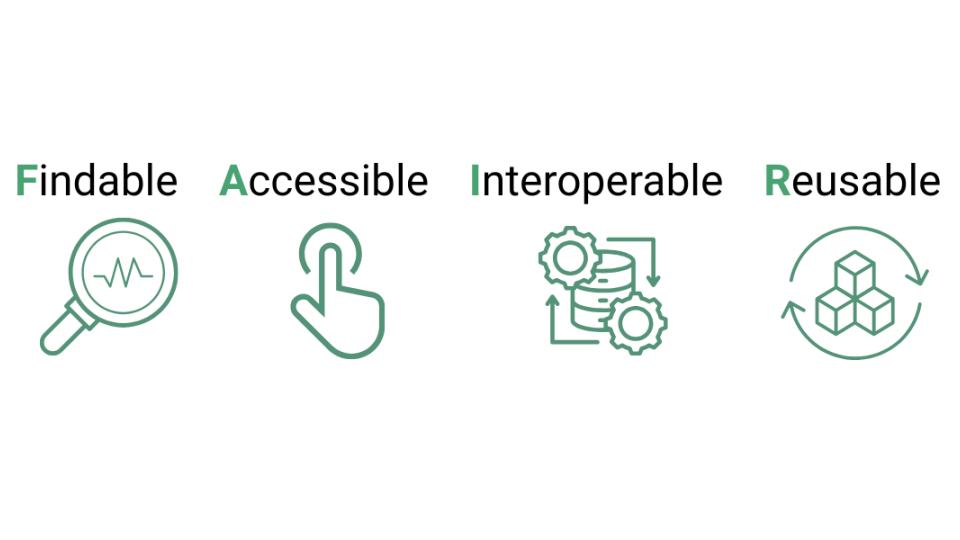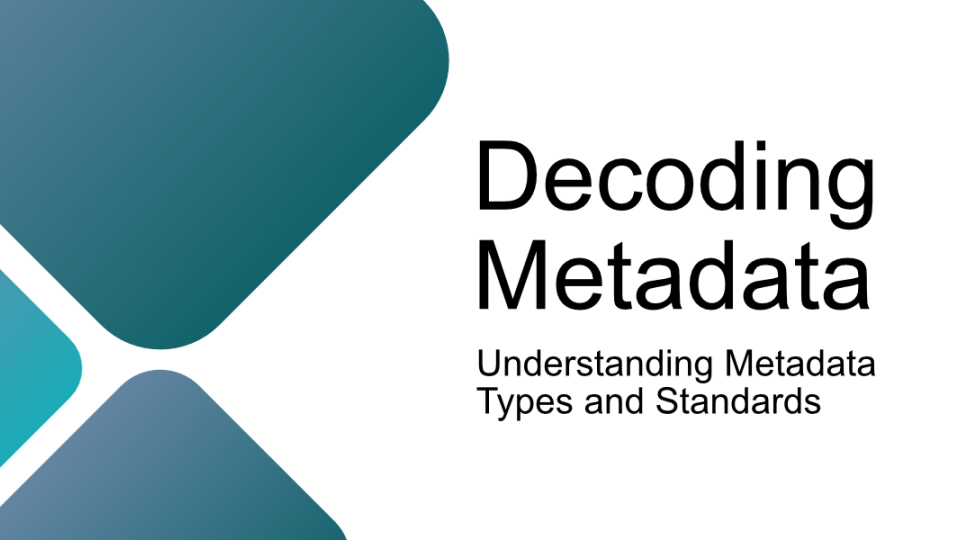We're living in the era of supermarkets, where without a "checklist" in hand, we can easily spend hours wandering the aisles, trying to pick the best product from thousands of similar options across different brands - all while balancing what we want with what we can afford. In the same way, in today's data-driven world, picking the right metadata standard can feel just as overwhelming and time-consuming as finding the right product in a supermarket. And if we don't have a clear checklist, it's easy to get lost in the sea of existing metadata standards.
However, selecting the right metadata standard isn't a 'one-size-fits-all' decision. Organisations differ in size, industry, goals, and technical capabilities, so the chosen standard must align with these unique needs.
In our previous articles, we took you through a journey of metadata – its history, its existing state, and we tried to decode the metadata types and standards for you. Now that you know a few of the several metadata standards that exist, it's time to walk you through best practices, essential factors, and expert tips for choosing the ideal metadata standard that suits your current operations as well as adapts to future growth and complexity [1][2][4].
1. Start by understanding your needs
Before diving into the vast pool of available metadata standards, take a step back to evaluate your organisation's specific needs. Consider:
- The nature of your data: Is it textual, numeric, multimedia, or a combination?
- Purpose of metadata: Are you focused on archiving, data exchange, research documentation, or something else?
- Timeframe: Do you need a standard for temporary project use or long-term preservation?
- Industry-specific demands: Some sectors, like healthcare or education, have tailored metadata standards that support regulatory compliance and operational best practices.
This foundational step ensures your metadata framework supports your organisation's broader data management goals.
2. Flexibility and scalability
A good metadata standard must meet today's requirements while leaving room for tomorrow's growth. As your data volume expands and diversifies, your standard should:
- Support diverse and evolving data types.
- Be extensible, allowing the addition of new metadata elements.
- Handle growing complexity without a complete overhaul.
Choose a standard that evolves alongside your organisation rather than becoming obsolete as your data landscape changes.
3. Evaluate interoperability
Your metadata needs to interact with external systems, software platforms, and possibly with other organisations. High interoperability ensures smooth data exchange, better integration, and collaboration with partners or across internal departments. Prioritise standards that play well with others—this can be a major enabler for system interoperability and long-term data portability.
4. Community support and longevity
No matter how strong we stand, community support is something we all crave for! Likewise, your (meta) data needs a well-backed metadata standard! A widely adopted metadata standard often has a strong user community, which brings several advantages, such as regular updates and bug fixes, extensive documentation and best practices, active forums and support channels, etc. This collective wisdom can be incredibly helpful, especially during implementation or troubleshooting.
5. Clear documentation and training resources
Ease of adoption often depends on how well a standard is documented. When you choose your metadata standard, check for the availability of any related tutorials, training modules, and onboarding materials, detailed guides and specifications, as well as examples and case studies from real-world use cases. Well-documented standards certainly streamline the learning curve and avoid any confusion that may arise over time.
6. Customisation capabilities
No matter how comprehensive a standard is, there will likely be cases where you need to tweak it for your specific requirements. Choose a standard that allows you to customise your metadata elements and supports integration with existing data frameworks or proprietary systems. This adaptability is crucial, especially in dynamic industries, such as healthcare and robotics, among others, or fast-growing organisations.
7. Analyse Costs and Licensing Terms
Most academic and library-oriented metadata standards (like MODS, Dublin Core, METS) are free and open. However, some specialised standards, such as ISO standards, can come with varying financial implications [3]. While choosing a metadata standard, consider the following factors:
- Initial implementation costs.
- Long-term maintenance expenses.
- Training and personnel costs.
- Licensing fees (if not open source).
Understanding the total cost of ownership helps you plan a realistic budget and avoid hidden costs down the road.
8. Regulatory Compliance and Security
Regulatory compliance and data security are equally non-negotiable. Particularly in sensitive sectors like finance, healthcare, or education, your chosen metadata standard must meet legal and ethical standards. Ensuring that metadata structures align with data privacy laws such as GDPR or HIPAA protects your organisation and fosters trust among stakeholders.
9. Try Before You Commit
Finally, before rolling out a metadata standard across your entire organisation, consider conducting a pilot test. Implement the standard on a small dataset or in a specific department and observe how it performs in real-world scenarios. This trial phase can highlight unforeseen issues and give you a better understanding of the adjustments required before a full-scale rollout.
Choosing the right metadata standard is a strategic decision that affects your entire data ecosystem. It's not just about technical specs but also about aligning metadata practices with your project's objectives, regulatory environment, and future growth. By carefully assessing your needs, ensuring flexibility, evaluating costs, and prioritising interoperability and compliance, you can lay the groundwork for sustainable, efficient, and effective metadata management.



